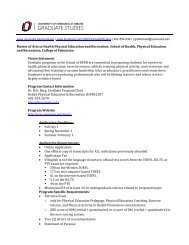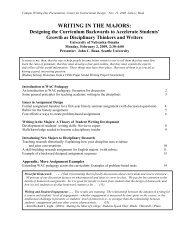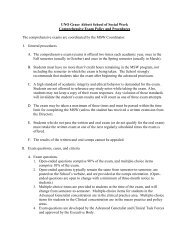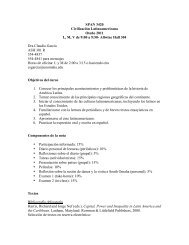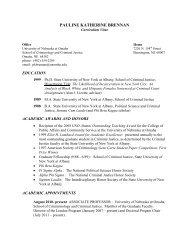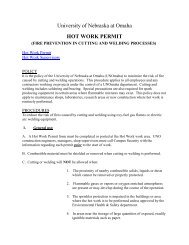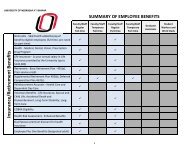Kinetics of an Iodine Clock Reaction
Kinetics of an Iodine Clock Reaction
Kinetics of an Iodine Clock Reaction
You also want an ePaper? Increase the reach of your titles
YUMPU automatically turns print PDFs into web optimized ePapers that Google loves.
CHEM 3364 Spring 2008 2<br />
Preliminary Investigations<br />
Much <strong>of</strong> the chemistry in this system c<strong>an</strong> be deduced using simple experiments in which two<br />
or more reagents are mixed together <strong>an</strong>d the results recorded. Each preliminary investigation is<br />
followed by one or more questions. The <strong>an</strong>swers to these questions are import<strong>an</strong>t so give them<br />
careful consideration. When asked to write tentative reactions, put them in the following general<br />
form:<br />
R 1 + R 2 → P 1 + P 2<br />
where R represents a react<strong>an</strong>t <strong>an</strong>d P represents a product. Whenever possible, replace R <strong>an</strong>d P<br />
with known react<strong>an</strong>ts <strong>an</strong>d products. If you c<strong>an</strong>not identify a react<strong>an</strong>t or product (but know that<br />
one must be there) then retain the needed R <strong>an</strong>d/or P designations in your reaction. If possible,<br />
bal<strong>an</strong>ce your reactions.<br />
Investigation 1. Place approximately 5 mL each <strong>of</strong> the KI, KCl, K2S2O8, Na2S2O3, <strong>an</strong>d I2<br />
solutions in separate test-tube. To each test-tube, add a few drops <strong>of</strong> the starch indicator solution<br />
<strong>an</strong>d record your observations.<br />
Questions: What reagent is responsible for ch<strong>an</strong>ging the indicator’s color? Is this reagent a<br />
react<strong>an</strong>t or a product? Write a tentative reaction that explains your observations using starchI to<br />
represent the indicator’s colorless form <strong>an</strong>d starchC to indicate its colored form. We will assume<br />
that the starch indicator always reacts in a 1:1 stoichiometry.<br />
Investigation 2. Mix together ten different combinations (two-at-a-time, about 5 mL each) <strong>of</strong><br />
your reagents. Add a few drops <strong>of</strong> the indicator solution to each combination <strong>an</strong>d record your<br />
observations.<br />
Questions: Which combinations <strong>of</strong> reagents produce a ch<strong>an</strong>ge in the indicator’s color? Write a<br />
tentative reaction that explains your observations.<br />
Investigation 3. In separate test tubes place (a) about 5 mL <strong>of</strong> KI, (b) about 5 mL <strong>of</strong> KI <strong>an</strong>d 1<br />
mL <strong>of</strong> Na2S2O3, <strong>an</strong>d (c) 5 mL <strong>of</strong> KCl. Add a few drops <strong>of</strong> the indicator solution to each test<br />
tube. Finally, add about 5 mL <strong>of</strong> K2S2O8 to each test tube <strong>an</strong>d record your observations. As <strong>an</strong><br />
additional experiment, try adding 1 mL <strong>of</strong> Na2S2O3 to each test tube <strong>an</strong>d recording your<br />
observations.<br />
Questions: Which combinations <strong>of</strong> reagents produce a ch<strong>an</strong>ge in the indicator’s color? For those<br />
combinations that provided a positive result, are there ways in which they behaved differently?<br />
How c<strong>an</strong> you explain this difference? Write tentative reactions that explain your observations.<br />
What have we learned to this point?<br />
What is the chemical reaction with the K2S2O8?<br />
How does Na2S2O3 participate? What is its role?




